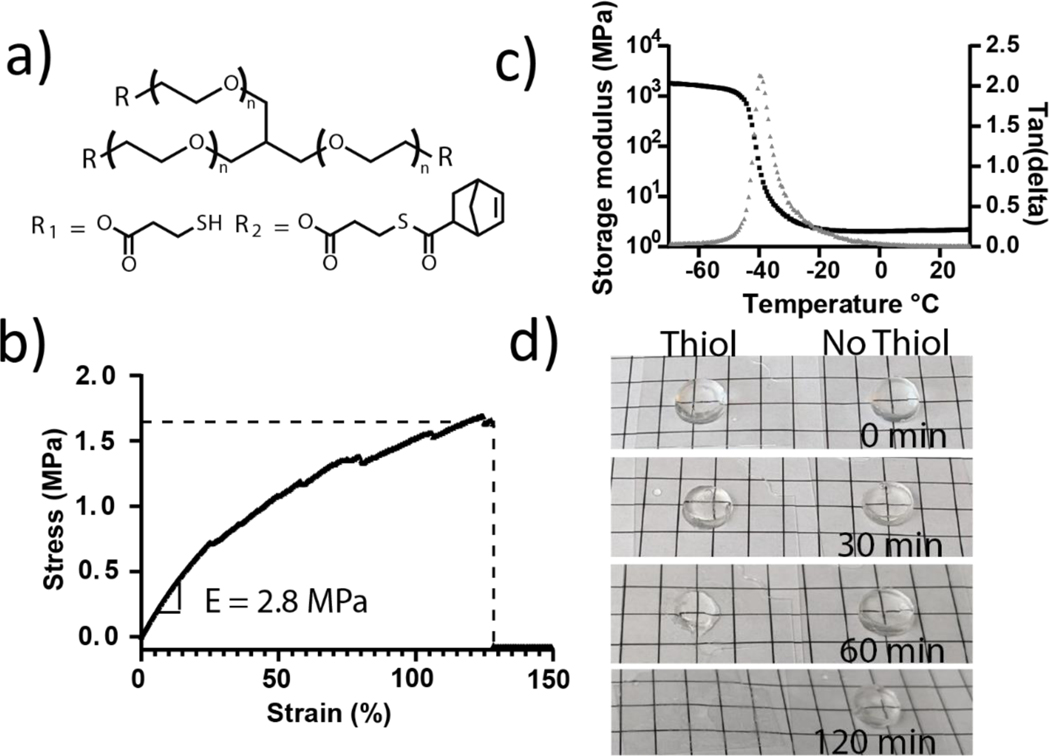Figure 1:
Photoinitiated thiol-ene ‘click’ chemistry and thioester chemistry were used to create mechanically robust networks with adaptable crosslinks. a) A 3-arm PEG macromer was functionalized with thiol or thioester norbornene function groups to yield resin precursors: 3-arm PEG thiol (1300 Da) and 3-arm PEG norbornene with internal thioester groups (1600 Da). b) Typical stress-strain behavior of a thioester elastomer under tensile loading until failure (0.1 mm/s). The Young’s modulus was calculated using the slope of the curve between 5 and 10% strain. c) The young’s storage modulus (black) and tan(delta) (grey) were measured as a function of temperature. A glass transition temperature of −40°C is illustrated by the position of the peak in tan(delta). d) Representative images of free-standing elastomer samples placed in pH 9.0 tris buffer over the course of 2 h with and without 300 mM 2-mercaptoethanol to monitor degradation. Gridline spacing is 5 mm.

